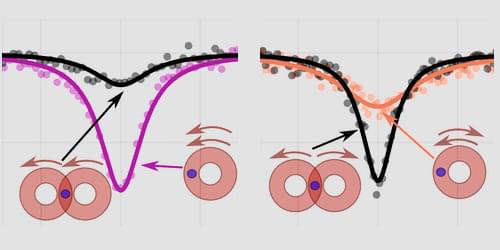A light beam with orbital angular momentum can produce the rotational analog of the Doppler effect on an ion.
A vortex light beam is one whose wave fronts rotate like a corkscrew, endowing the beam with orbital angular momentum. An atom subjected to this beam experiences the usual kick in the direction of the beam’s propagation but also a weaker, sideways kick from the beam’s orbital angular momentum. The Doppler effect causes a moving atom to absorb light at wavelengths that are shifted with respect to those of a stationary atom. Consequently, the sideways kick from a vortex beam can produce what is called a rotational Doppler effect (RDE) in an atom. Nicolás Nuñez Barreto of the University of Buenos Aires in Argentina and his collaborators have now characterized the RDE produced by infrared (IR) vortex beams on a single trapped calcium ion [1].
The researchers used IR lasers to drive a particular transition between electronic levels of the ion in a magnetic field. Two additional IR lasers created two identical copropagating vortex beams whose wavelengths could be adjusted. Thanks to the copropagation and the nature of the transition, the linear Doppler effects of the two beams canceled out. Only when the ion received different sideways kicks resulting from the beams’ unequal angular momenta did it absorb photons, revealing the presence and strength of the RDE.










Leave a reply